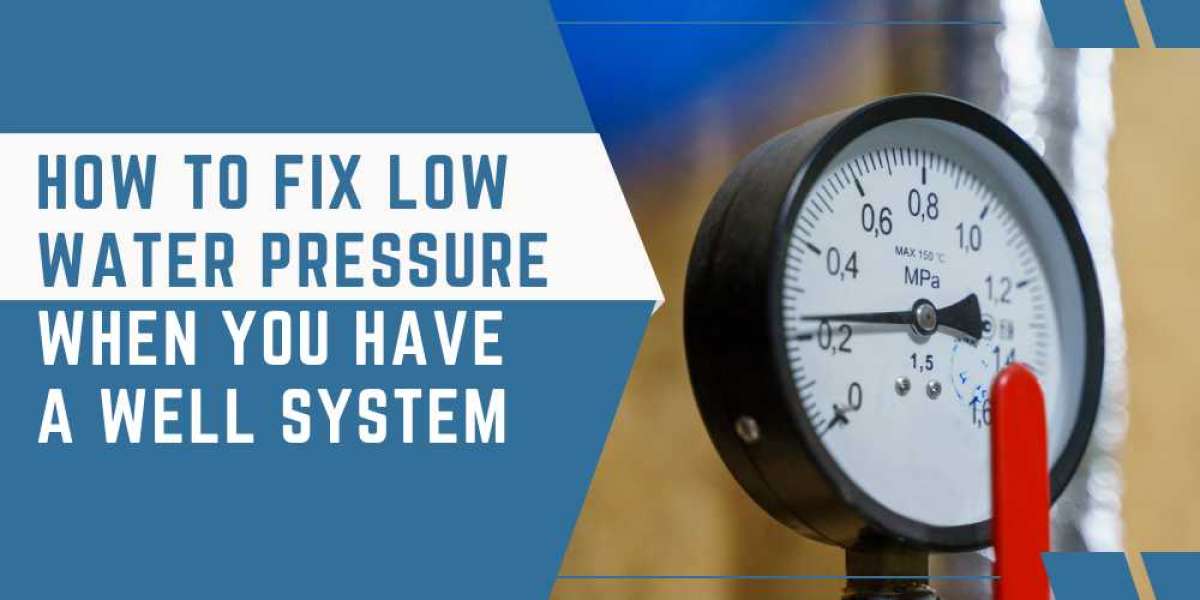The Troubles of Tepid Trickle
Imagine eagerly turning on your shower, only to be met with a disappointing dribble. This scenario is all too familiar for those with well systems experiencing low water pressure. But, this nuisance can often be fixed with some plumbing know-how. This guide will take you through understanding and resolving low water pressure issues in well systems.
Understanding Your Well System: The Heart of Your Home’s Plumbing
Your well system is the unsung hero of your home's plumbing. It's a complex network, primarily consisting of the well pump, pressure tank, and the associated plumbing. Each element plays a vital role. The pump draws water from the well, the pressure tank regulates the pressure, and the plumbing distributes water throughout your home. When one part falters, it can drastically reduce your water pressure.
Common Culprits: Identifying the Pressure Problem
Several issues can lead to low water pressure in a well system:
- Clogged Sediment Filters: Sediment and debris can clog filters over time, restricting water flow.
- Malfunctioning Pressure Tank: If the tank isn't functioning properly, it won't regulate pressure correctly.
- Aging Plumbing: Old or corroded pipes can reduce water flow and pressure.
- Pump Issues: Problems with the well pump, such as a failing motor or clogged intake, can also lead to low pressure.
DIY Fixes: Rolling Up Your Sleeves
Many low-pressure issues can be resolved with some DIY effort:
- Cleaning or Replacing Filters: Regularly cleaning or replacing sediment filters can prevent clogs.
- Adjusting the Pressure Switch: This can sometimes increase the water pressure.
- Inspecting the Pressure Tank: Check for signs of wear or damage.
- Routine Maintenance: Regular checks and well pump maintenance can prevent issues.
When to Call the Pros: Recognizing Your Limits
Tackling low water pressure issues can be a rewarding DIY project, but recognizing when to call in the professionals is crucial. Complex problems, such as deep well pump malfunctions or extensive plumbing renovations, demand expert skills and equipment.
- Deep Well Pump Issues: These pumps are located underground and require special tools for repair or replacement. If your troubleshooting points towards the pump, it's time to call a seasoned well technician.
- Major Plumbing Repairs: Sometimes, the problem lies within the intricate network of your home's plumbing. Licensed plumbers in Alabama best handle significant leaks, pipe corrosion, or extensive system upgrades. They can ensure the job is done safely and up to code.
Professional intervention saves time and prevents potential aggravation of the problem, which can be costlier in the long run.
Preventative Measures: Keeping the Pressure Perfect
Proactive maintenance is the key to avoiding sudden dips in your water pressure. Regularly attending to your well system's needs can significantly reduce the likelihood of future problems. Here's how you can keep your system in top shape:
- Regular Pressure Tank Checkups: Ensure your pressure tank is functioning correctly. Look out for signs like waterlogged tanks or fluctuating pressure levels.
- Filter Maintenance: Clean or replace your sediment filters periodically to prevent clogging. This simple step can greatly improve water flow.
- Well Pump Inspection: Schedule an annual inspection of your well pump. Professionals can spot and rectify issues before they escalate.
Additionally, being mindful of your water consumption and avoiding overburdening your system with simultaneous high-demand activities can maintain consistent pressure.
Optimizing Pump Performance: Ensuring Efficiency at the Source
The well pump is the heart of your well system, playing a pivotal role in maintaining consistent water pressure. Optimizing its performance is key to ensuring efficient water flow throughout your home.
- Regular Servicing: Like any other mechanical equipment, well pumps require regular servicing to operate efficiently. This includes checking for wear and tear, ensuring secure electrical connections, and calibrating the pump correctly.
- Upgrading Your Pump: If your pump is old or underpowered for your home's needs, consider upgrading to a more efficient model. Modern well pumps are designed for better performance and energy efficiency, which can translate into more consistent water pressure.
By focusing on the well pump's health and efficiency, you can significantly improve the overall performance of your well system.
The Role of Water Quality in Pressure Maintenance
Water quality plays an underrated but crucial role in maintaining the pressure of your well system. Hard water, rich in minerals like calcium and magnesium, can lead to scale buildup in pipes and fixtures, reducing water flow and pressure.
- Water Softening Solutions: Implementing water softening solutions can help prevent mineral buildup, protect your pipes, and maintain optimal water pressure.
- Regular Water Testing: Periodic testing of your healthy water for pH levels, mineral content, and other impurities can help you avoid potential issues that could impact your system's pressure.
Addressing water quality not only ensures better pressure but also prolongs the lifespan of your plumbing and appliances.
With these additional aspects considered, you'll have a well-rounded approach to tackling and preventing low water pressure issues in your well system, ensuring a steady and reliable water supply.
Flowing into the Future
Confronting low water pressure in your well system can seem daunting, but it becomes a manageable task with the proper knowledge and approach. Understanding your system's intricacies, identifying the root causes of problems, and determining whether a DIY fix or professional assistance is needed is crucial for maintaining a reliable water supply. With these insights and actions, you can ensure a future of steady, satisfying water pressure in your home.








